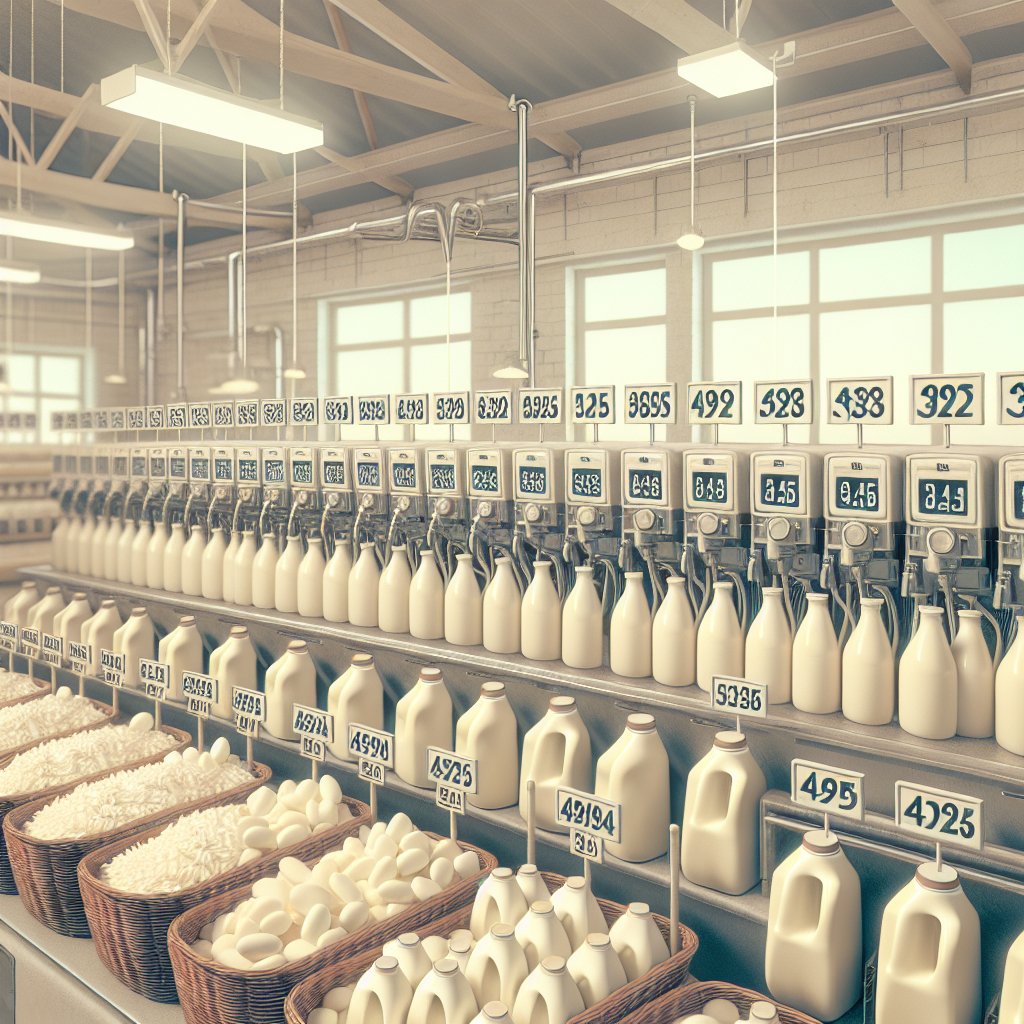The forecasts for milk prices in collection points for the year 2024 are a topic of significant interest among dairy farmers, industry stakeholders, and consumers alike. As the dairy market continues to evolve, understanding the factors that influence milk prices is crucial for making informed decisions. This article will explore the anticipated trends in milk prices for 2024, examining the underlying economic, environmental, and market dynamics that are expected to shape the dairy industry in the coming year.
Factors Influencing Milk Prices
Several key factors play a pivotal role in determining milk prices at collection points. These factors can be broadly categorized into supply and demand dynamics, production costs, and external influences such as government policies and global market trends.
Supply and Demand Dynamics
The fundamental principle of supply and demand is a primary driver of milk prices. When the supply of milk exceeds demand, prices tend to fall, while a shortage of milk can lead to price increases. In 2024, several elements are expected to influence this balance:
- Production Levels: The overall production of milk is influenced by various factors, including weather conditions, feed availability, and herd health. In regions where adverse weather conditions persist, milk production may decline, leading to higher prices.
- Consumer Demand: Changes in consumer preferences, such as a shift towards plant-based alternatives or increased demand for organic dairy products, can significantly impact milk prices. The growing trend of health-conscious consumers may also affect the types of dairy products in demand.
- Export Markets: The global demand for milk and dairy products can influence local prices. If countries that import dairy products experience increased demand, it may lead to higher prices in the exporting countries.
Production Costs
The cost of producing milk is another critical factor that affects pricing. In 2024, several cost components are expected to impact dairy farmers:
- Feed Prices: The cost of feed is a significant expense for dairy farmers. Fluctuations in grain prices due to weather events, trade policies, or global market conditions can directly affect milk production costs.
- Labor Costs: The availability and cost of labor in the agricultural sector can influence production efficiency and, consequently, milk prices. In regions facing labor shortages, farmers may incur higher costs, which could be passed on to consumers.
- Energy Costs: The rising costs of energy, including fuel and electricity, can impact the overall cost of dairy production. As energy prices fluctuate, dairy farmers may need to adjust their pricing strategies to maintain profitability.
Market Trends and Predictions for 2024
As we look ahead to 2024, several market trends are emerging that could shape the landscape of milk pricing. Understanding these trends will be essential for stakeholders in the dairy industry.
Technological Advancements
Technological innovations in dairy farming are expected to play a significant role in shaping milk prices. Advancements in milking technology, herd management systems, and data analytics can enhance productivity and efficiency. As farmers adopt these technologies, they may be able to reduce production costs, which could lead to more stable milk prices.
Sustainability Initiatives
With increasing consumer awareness of environmental issues, sustainability initiatives are becoming more prominent in the dairy industry. Farmers who adopt sustainable practices may find themselves better positioned in the market, as consumers are willing to pay a premium for products that align with their values. This shift could lead to a segmentation of the market, with organic and sustainably produced milk commanding higher prices.
Government Policies and Regulations
Government policies and regulations can have a profound impact on milk prices. In 2024, potential changes in agricultural subsidies, trade agreements, and environmental regulations may influence the dairy market. For instance, if governments implement stricter environmental regulations, dairy farmers may face increased compliance costs, which could be reflected in milk prices.
Conclusion
In summary, the forecasts for milk prices in collection points for 2024 are shaped by a complex interplay of supply and demand dynamics, production costs, technological advancements, sustainability initiatives, and government policies. As the dairy industry navigates these challenges and opportunities, stakeholders must remain vigilant and adaptable to the changing landscape. By understanding the factors influencing milk prices, dairy farmers and industry participants can make informed decisions that will help them thrive in the coming year.




